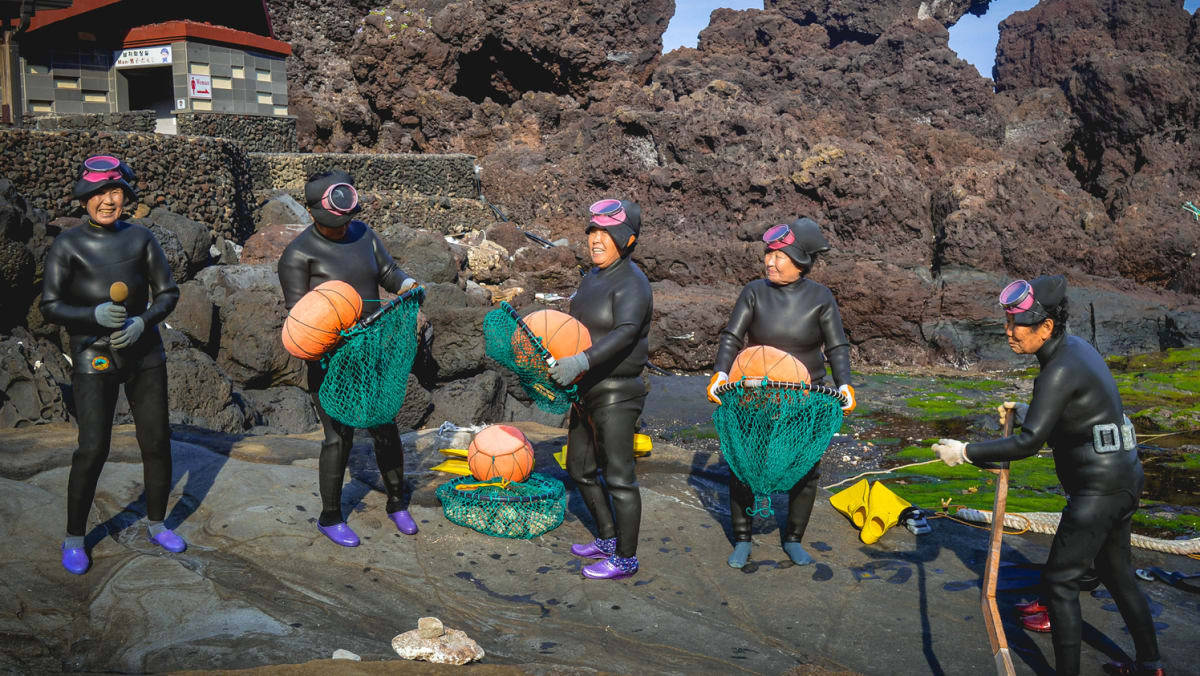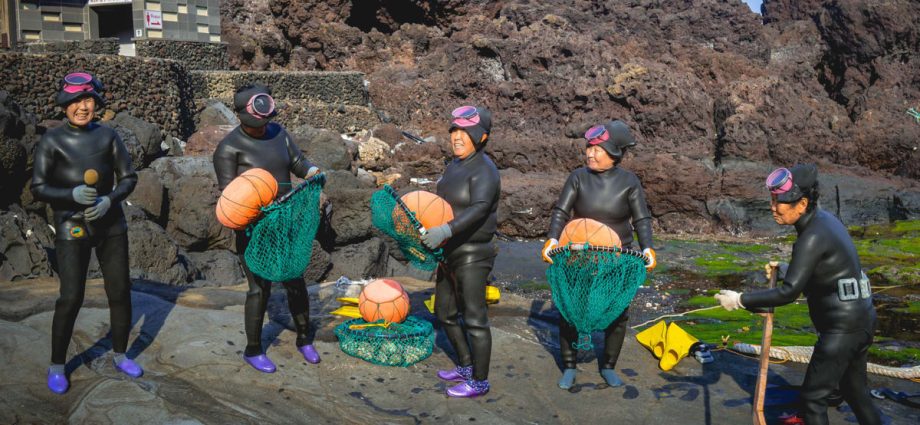
Today, Jeju’s close-knit haenyeo community numbers some 3,200 women scattered along the island’s gorgeous coastline. In Seogwipo, the district where JW Marriott is located, there are around 50 active members, though a generation ago, they numbered 150.
At the local Beophwan Haenyeo Experience Center, a few minutes drive from the hotel, we were collected by Mija Ko, a petite, sprightly, bright-eyed woman who, at 19, began working as a haenyeo to help raise her family. That was 50 years ago. “I was born and raised in the ocean,” she said as she checked my wetsuit. I couldn’t help but marvel at her smooth snowy-white skin. She had no pores. It was like looking at a dolphin. “My mother-in-law was a haenyeo, but we’re the only ones in our family.”
Every day at 8am, Ko scrambles across a narrow strip of basalt rocks out to the bay and ocean. From January to May, the sea yields a harvest of shellfish, abalone and sea cucumber. From the end of June to July, it’s all about uni, though this year, the season lasted just five to six days on account of the high waves. On a good day, she collects a kilo of seafood which she sells at a fixed rate of 150,000 KRW (S$153), of which 2000 KRW (S$2) is donated to the haenyo community as a kind of tithe.

